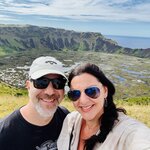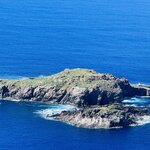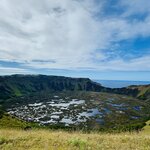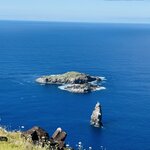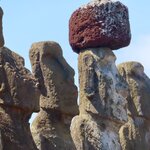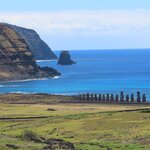Highlights
- Take in views of Santiago from atop Cerro San Cristóbal
- Stroll the colorful streets of coastal Valparaíso, a UNESCO World Heritage Site
- Hike to the top of Base Torres, the most famous viewpoint in Torres del Paine
- Visit Easter Island and learn the secrets of the moai, the ancient stone idols
Brief Itinerary
| Day | Highlights | Overnight |
|---|---|---|
| Day 1 | Arrive in Santiago de Chile, Explore | Santiago |
| Day 2 | Santiago City Tour | Santiago |
| Day 3 | Viña del Mar & Valparaíso Excursion | Santiago |
| Day 4 | Fly to Puerto Natales | Torres del Paine |
| Day 5 | Hiking in Torres del Paine | Torres del Paine |
| Day 6 | Torres del Paine Full-Day Private Tour | Torres del Paine |
| Day 7 | Depart Patagonia & Return to Santiago | Santiago |
| Day 8 | Fly to Easter Island | Easter Island |
| Day 9 | Easter Island: Rapa Nui Full-Day Tour | Easter Island |
| Day 10 | Easter Island: Orongo & Ahu Akivi | Easter Island |
| Day 11 | Depart Santiago |
Detailed Itinerary
Day 1: Arrive in Santiago de Chile, Explore

Welcome to Chile! Upon arrival at Santiago International Airport, a driver will meet you and transfer you to your hotel. The rest of the day is yours to explore the city at your leisure.
Snap photos in front of the Palacio de la Moneda. Chile's opulent presidential palace (La Moneda) is a short stroll from the Plaza de Armas. It was here in 1973 that Chile's armed forces, backed by the US government, overthrew President Salvador Allende, kicking off a brutal right-wing military dictatorship that would last for 17 years. Visitors are welcome
Next, stroll the cobblestone streets of Barrio Bellavista. On the north side of Santiago, you'll find this trendy enclave with a fashionable and bohemian vibe. Stroll past colorful houses adorned with graffiti art and choose between an eclectic array of eateries and bars—great for people-watching.
For dinner, be sure to enjoy a culinary adventure in the city. In recent years, Santiago has emerged as a global foodie destination. Chilean chefs are reinventing traditional dishes, like empanadas, cazuelas (stews), and seafood with ingredients harvested all the way from the northern deserts and southern Patagonian regions. You can find great restaurants and wine bars not only in the Bellavista neighborhood but also in the revitalized historic barrios of Yungay and Italia.
Day 2: Santiago City Tour

Today, further explore Santiago on a guided tour—choose between half-day or full-day, depending on your preference.
Highlights of the tour include:
- Wandering the aisles of Santiago's labyrinthine Mercado Central and Mercado La Vega. These markets are the beating heart of the city, overflowing with vendors and local residents eager to get their hands on the day's fresh produce. With the assistance of an English-speaking guide, engage with these vendors and shoppers, learning about their daily routines while getting the inside track on the most delicious ingredients to try.
- A visit to the Plaza de Armas, located in Santiago's historic center. There's a lot of history within the four corners of this expansive stone plaza, as it was founded all the way back in 1541. Nearby sits the impressive Catedral Metropolitana, a neoclassical church circa 1748, with towering twin bell towers dominating the north side of the plaza.
- Ascend to the top of Cerro San Cristóbal if you did not do so yesterday. Hop on a cable car to the top of this hill that sits above the city. Enjoy the 360 degrees panoramas and take plenty of photos, as these are the most incredible views in Santiago.
The evening is yours to enjoy on your own time.
Day 3: Viña del Mar & Valparaíso Excursion

Today, leave the capital on an excursion to central Chile's Pacific Coast. Visit two neighboring cities: Viña del Mar and Valparaíso. First, arrive in Viña del Mar, an upscale coastal resort city teeming with shopping complexes, commercial high-rises, boutiques, and well-manicured gardens. The city's modern image is the result of reconstruction efforts following the numerous earthquakes the Chilean coast has endured over the years. However, there are still 20th-century landmarks, like the Germanic Wulff Castle and the Venetian-Gothic Vergara Palace, the former home of the founder of Viña del Mar. The city is the perfect place to enjoy a seaside lunch at one of the many upscale restaurants on the shore.
Next, visit the port city of Valparaíso, located adjacent to Viña del Mar. This colorful metropolis is the artistic and bohemian soul of the country. It's filled with street art, music, and poetry. Moreover, it's a throwback to the turn of the 20th century, when electric trolleys coasted along the waterfront, and lurching funicular elevators carried passengers to the highest points in the city.
Start exploring Valparaíso by visiting the old plazas of Sotomayor and Aníbal Pinto. Then, ride the Reina Victoria funicular and ascend to the top. From here, wander the hilly neighborhoods of Cerro Alegre, Cerro Concepción, and Cerro Florida. On the last hill, find La Sebastiana, a museum once the home of famed Chilean poet Pablo Neruda. No matter where you go, you can always find sweeping views looking out over the colorful houses to the Pacific Coast and the blanket of blue water running out to the horizon. Following the exploration, head to the minivan to transfer back to Santiago and return to your hotel.
Day 4: Fly to Puerto Natales

Enjoy breakfast at your hotel before transferring to the airport for your flight to Punta Arenas. Upon arrival, a travel representative will meet you and accompany you on the ride to Puerto Natales.
The representative will assist you with check-in at your hotel and provide you with a detailed itinerary covering all the services included in your tour and additional information on the organization of your trip within Patagonia. Spend the evening at your leisure, before tomorrow's outdoor adventures begin.
Chat with a local specialist who can help organize your trip.
Day 5: Hiking in Torres del Paine

In the morning, transfer from Puerto Natales to Torres del Paine National Park. The total distance is 70 miles (112 km), and the drive takes about two hours, with a short stop at Cerro Castillo Village. The scenery along the way is incredible, with glimpses of Torres del Paine's massive peaks, as well as some of the local fauna, like guanacos.
Arrive at the Laguna Amarga main entrance and register with the park office. Then, it's a quick shuttle ride to the Las Torres sector for check-in and to leave your heavier bags here before trekking up the mountain. From here, hike up Mount Almirante Nieto, which features stunning views of the Asencio Valley below and Lago Nordenskjöld. After two hours of hiking, reach Refugio Chileno, a great place for lunch or a rest.
It's another hour of hiking past ancient Lenga forests until you arrive at a moraine. The next part is a challenging, steep ascent for 45 minutes until you reach the top, known as Mirador Base Torres. "Mirador" in English means "viewpoint," and this little section of the mountain is the best view in the park. From here, take in the collection of towering peaks of nearby Torre Sur, Central Tower, North Tower, Condor's Nest, and Glacier Torre—all set amid the sweeping backdrop of the Patagonian highlands.
Distance: 11.2 miles
Duration: 8 hours
Day 6: Torres del Paine Full-Day Private Tour

Today, meet with your guide and embark on a private journey around Torres del Paine National Park. Discover the unrivaled flora and fauna and impressive viewpoints at your own pace. Throughout the day, transport to different areas of the park known for impeccable viewing of the park's wildlife and stunning landscapes. Indulge in some short hikes, and stop for a picnic lunch along the way. At the end of the tour, return to your hotel.
Day 7: Depart Patagonia & Return to Santiago

It's time to say goodbye to Patagonia. In the morning, make the transfer from Puerto Natales to the Punta Arenas airport. From there, take a domestic flight to Santiago and spend the night at the airport hotel. Stay close to the airport for your early-morning flight to continue your adventure on Easter Island.
Day 8: Fly to Easter Island

After breakfast, make your way to the most remote inhabited land in the world: Rapa Nui, or Easter Island, as it's commonly known. The trip involves a transfer from your hotel to the airport to catch a three-hour flight to the island. After transferring to your hotel and checking in, spend the remainder of the day exploring at your leisure.
There are around 600 stone figures, or moai, on this island—some of which reach 32 feet (10 m) in height. Many of them stand on the stone ahu (ceremonial pillars) that dot the island's green hillsides. For a bit of history, these were fashioned out of volcanic rock by the first Polynesian settlers after they arrived in 800 CE. The figures themselves represent deceased leaders of the five tribes that once inhabited the island and supposedly offered spiritual protection. Around the 16th century, the islanders exceeded their natural resources and—as a result of famine and war—tore down many idols, believing they outlasted their usefulness.
By the 19th century, Europeans, smallpox, and slavery arrived, annihilating some of the population while more emigrated to Tahiti to work on plantations. Eventually, the population rebounded, and Rapa Nui was annexed to Chile in 1888. Locals today are governed by a council of Indigenous chiefs.
Suggested activities on the island:
- Explore Hanga Roa. This is the main town on Easter Island, with 3,000 residents, or roughly 87 percent of the island's inhabitants. Hanga Roa has a small-town coastal vibe with restaurants serving ceviche, empanadas stuffed with fresh tuna, po'e (a pumpkin and plantain cake), and taro ice cream.
- Visit the Museo Antropológico Sebastián Englert. For an introduction to island life, come to this anthropological museum and view exhibits celebrating the Indigenous patrimony, such as ancient tools, totems, sculptures, and more.
- Take a hike outside of town to Ahu Tahai. Here, there are some moai, as well as caves nearby. It also makes a great sunset-viewing spot for your first night on the island.
Day 9: Easter Island: Rapa Nui Full-Day Tour

After breakfast, embark on a full-day tour of the island. It's an informative journey that will shed light on Rapa Nui's famous archaeological sites. Start at Ahu Te Pito Kura, a unique rock structure featuring a central stone that, according to a legend, was brought over by a king of the first tribes and supposedly still emits spiritual power.
Then, it's off to Rano Raraku, an impressive volcanic crater. Seek out many moai along the base. Next, enjoy a delicious snack at Ahu Tongariki, the biggest ceremonial platform on the island. Here, there are 15 moai displayed in a row. After touring the site, visit another ceremonial platform called Ahu Akahang and finish off the day at the beautiful, white-sand beach of Anakena.
Day 10: Easter Island: Orongo & Ahu Akivi

Today is another exciting day of exploring Easter Island. The itinerary includes two half-day tours to Orongo and Ahu Akivi. After breakfast, travel a few minutes to the southwest corner of Rapa Nui and the remains of the village of Orongo. Located on the rim of an inactive volcano called Rano Kau, this area enjoys a special place in the island's history, as it was the principal site of what's known as the "Birdman" era. The cult of the Birdman took root in Rapa Nui in the 16th century after locals gave up on the moai due to war and famine.
The cult of the Birdman was also a contest. In order to appease their deity, called Meke-Meke, islanders would hold an annual competition to see who would be crowned the next chief. The contest involved a group of men swimming to two nearby islands and waiting until terns (seabirds) laid their first eggs of the season. Whoever returned with the first egg became chief for a year, also dubbed the Birdman. Orongo was the ceremonial village in which he was crowned.
You'll not only visit the village and the volcano, but also a cave by the sea known as Ana Kai Tangata. Inside this cave, view petroglyphs fashioned by the ancient inhabitants of the island. This excursion ends in the early afternoon and concludes the first tour of the day.
The second tour involves a trip about 1 mile inland to visit Ahu Akivi. This place is unique. Not only is it home to seven moai, but in ancient times, it also doubled as a celestial observatory. In other words, this is where islanders came to stargaze. An interesting feature is that the seven moai all face sunset during the spring equinox, and their backs are to the sunrise during autumn. While here, take a short hike to two other archaeological sites: the cave of Ana Te Pahu, the largest cavern on Rapa Nui, and the Puna Pau volcano. Following the tours, the evening is at your leisure.
Day 11: Depart Santiago

Today marks your last day on the island. Depending on your flight schedule, you should have some free time to explore Rapa Nui a bit more before transferring to the airport. Then, hop on a flight back to Santiago and catch your connecting flight home.
More Great Chile Itineraries
Looking for more inspiration for your trip to Chile? Check out these other Chile itineraries, explore different ways to spend 11 days in Chile, or discover the best time to visit Chile.



